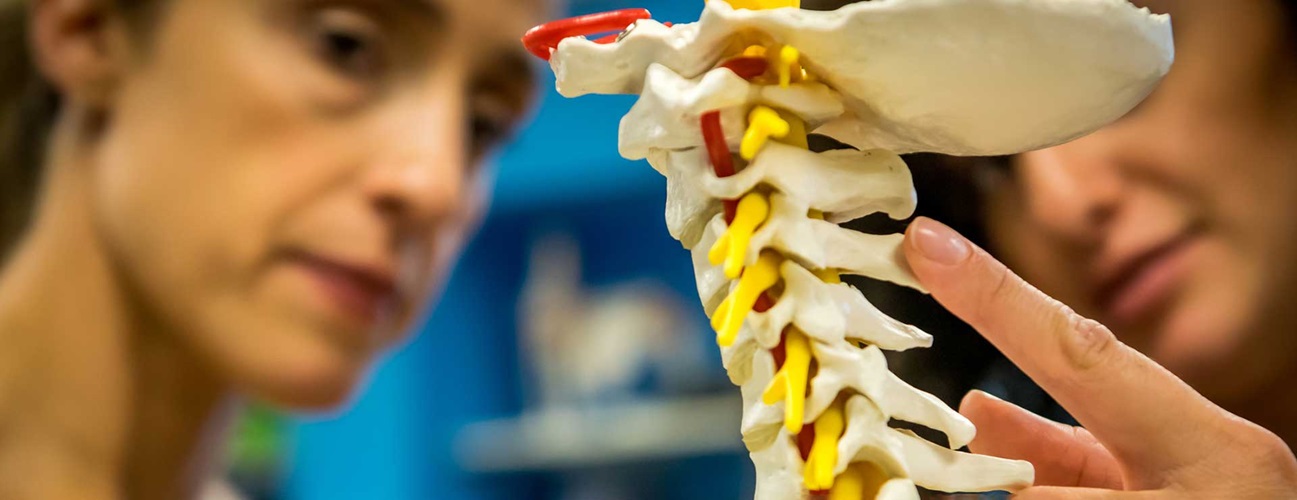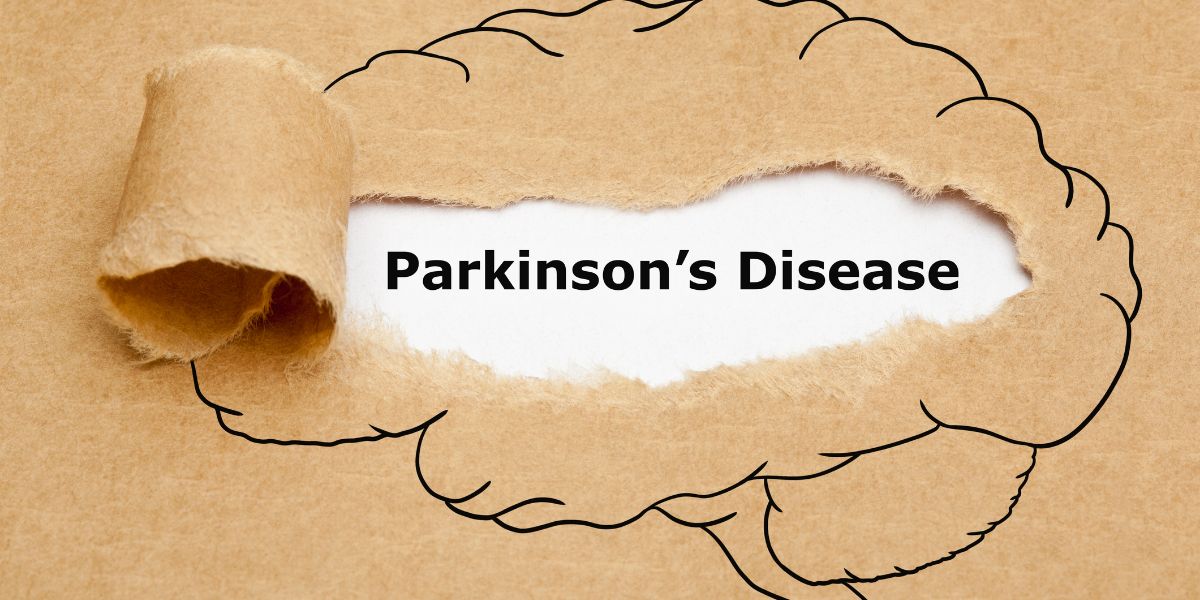Spondylosis or spinal osteoarthritis is a spinal condition due to the degenerative processes that occur at the level of the intervertebral discs and the bone structures of the spinal column.
What are the favorable factors of spondylosis
What are the symptoms of spondylosis?
What is spondylosis?
Spondylosis or spinal osteoarthritis is a spinal condition due to the degenerative processes that occur at the level of the intervertebral discs and the bone structures of the spinal column.
The incidence of spondylosis in the general population is equal between the sexes, this pathology is more frequently encountered around the age of 50. This characteristic of the pathology is due to the dehydration and loss of elasticity of the intervertebral discs that occurs with age and determines the formation of disc fissures with an increased risk of hernias.
Spondylosis can occur in any segment of the spine – cervical, thoracic or lumbar, but it is more common in the cervical area. The loss of bone resistance due to age is accompanied by the deposition of bone tissue in the form of osteophytes, a process frequently encountered at the cervical level but also at the level of the joints of the upper and lower limbs.
Cervical spondylosis can evolve unfavorably with the appearance of disc herniation, spinal cord compression or cervical myelopathy, complications that gradually set in and cause the generation of specific symptoms for myelopathy (due to compression of the spinal cord), radiculopathy (due to a pinched nerve) or myeloradiculopathy.
What are the favorable factors of spondylosis
Along with the physiological aging process that favors the occurrence of spondylosis, other risk factors of the condition are also involved, namely:
- Genetic factors – if there are family members with spondylosis, there is the possibility of its downward transmission
- Spinal trauma
- Obesity: excess weight overloads the intervertebral joints and favors the occurrence of spondylosis
- Sedentarism and vicious positions
- Daily professional activities that overload the spine
- The studies carried out recently have demonstrated the existence of a causal relationship between arterial hypertension and the incidence of spondylosis in this category of patients. The results obtained after conducting these studies indicate that 83% of patients with cervical spondylosis associate high blood pressure values, this fact generates an increased interest in the clinical evaluation of the link between cervical spondylosis and cardiovascular diseases such as acute coronary syndrome and heart rhythm disorders
The technological advances of recent years require the performance of most professional activities with the help of the computer and involve traveling by means of vehicles. These modern aspects of life increase the incidence of spondylosis, especially cervical spondylosis, due to the vicious positions adopted involuntarily while driving and the use of various types of devices represented by computers, laptops, tablets and mobile phones.
What are the symptoms of spondylosis?
Cervical spondylosis is manifested by headache, dizziness or balance disorders, pain, stiffness in the cervical spine and sometimes paresthesia in the upper limbs (tingling, stinging, numbness of the upper limbs).
The pain associated with cervical spondylosis is aggravated by movement and can radiate to the occipital (back of the skull), interscapular (between the shoulders) or upper limbs, being sometimes accompanied by syncope (loss of consciousness), migraine or pseudo angina (pain in the chest similar to a heart attack). The painful discomfort of patients with cervical spondylosis determines the limitation of movements in the upper limbs that involve anterior and lateral flexion, posterior extension or rotation and can be accompanied in certain situations by minor neurological manifestations such as muscle spasms.
The symptoms of thoracic spondylosis are represented by pain in the upper sections of the posterior thorax accentuated by movement and stiffness of the thoracic spine in the morning, after a night’s rest or when adopting long-term vicious positions. Muscle cramps and spasms, weakness or numbness of the upper and lower limbs and blocking of the joints are manifestations that alter the patient’s quality of life by generating difficulties in carrying out daily activities.
Lumbar spondylosis is mainly manifested by lumbar pain that is especially accentuated during prolonged standing, a feeling of weakness in the lower limbs, numbness or tingling in the soles, sciatica (pain caused by irritation of the sciatic nerve), difficulty walking and in rarer situations neurological disorders of the urinary bladder or large intestine.
Untreated, spondylosis can evolve unfavorably with the appearance of complications represented by:
- Spondylolisthesis: anterior sliding of a vertebral body in relation to the rest of the vertebrae
- Limitation of mobility at the level of the affected spinal segment
- Loss of bone density and muscle strength
- Excess weight
- The establishment of irreversible nerve damage
- Chronic pain
- The pain and discomfort felt by people with spondylosis affects the quality of night sleep and can cause difficulty concentrating during the day, making it difficult for the patient to carry out daily activities
Diagnosis of spondylosis
The diagnosis of spinal osteoarthritis is established during a clinical neurological consultation accompanied by a detailed history of the patient and is completed in certain situations by imaging investigations represented by:
- X-rays of the spine to detect marginal osteophytes, joint space narrowing, increased subchondral bone density, bone remodeling or joint effusions; X-rays of the spine can highlight the location and size of spinal fractures due to the pathological changes that occur in patients with spinal osteoarthritis
- Computed tomography or nuclear magnetic resonance to obtain details about the vascularization, innervation and degeneration of the discs and vertebrae of the spinal column
- CT myelography: the investigation involves the injection of a contrast substance at the level of the vertebral canal for the detailed visualization of the nerve structures contained therein
Functional tests can be recommended by the specialist to evaluate the transmission of electrical impulses along the nerve roots affected by spondylosis and include:
- Electromyography: functional investigation used to quantify the electrical activity at the level of the nerves involved in transmitting information to the muscle units they serve
- Nerve conductivity studies: this investigation involves the application of electrodes to the surface of the skin through which a low-intensity electric current is applied to certain nerve roots that are suspected of being affected, observing the contractile response of the muscles
Treatment of spondylosis
The treatment for spondylosis varies depending on the severity of the symptoms and can include:
- Applying a cervical collar or a special orthosis for the back that stabilizes the spinal column and contributes to the healing processes that take place after the surgical interventions on the spine; in certain situations, orthoses can replace the surgical maneuvers necessary to reduce spinal fractures due to pathological processes specific to spinal osteoarthritis
- Medical gymnastics: the physical exercises performed during the medical gymnastics sessions improve joint mobility and the patient’s resistance to effort, prevent muscle atrophy, contribute to the proper development of the reparative processes of the spine and stabilize the spinal column
- Acupuncture to reduce discomfort caused by pain
Medical pain management is carried out with the help of:
- oral non-steroidal anti-inflammatories to reduce pain caused by inflammation
- oral or injectable corticosteroids
- muscle relaxants to reduce muscle spasms
- anticonvulsants
- antidepressants
Oral or injectable corticosteroid medication is administered with caution for short periods, due to adverse side effects that increase the risk of interarticular cartilage loss. Serotonin and noradrenaline reuptake inhibitors can be used to reduce pain discomfort and paresthesias associated with spinal osteoarthritis, due to their effect of increasing the values of these neurotransmitters in the nervous system. Topical capsaicin is used to reduce the pain associated with spondylosis, due to its effect of interrupting the transmission of information at the level of nociceptors (receptors specialized in generating the sensation of pain).
Physical therapy is used in the case of patients with spinal osteoarthritis to rebuild muscle mass, increase exercise tolerance, maintain joint mobility, and improve coordination of movements, balance and posture.
Physiotherapy (medical recovery) combined with drug treatment relieves pain and improves vertebral resistance; physiotherapy procedures are represented by hydrotherapy and the application of kinesiological tapes.
Hydrotherapy is used in the treatment of spinal osteoarthritis due to the beneficial effects generated by performing physical exercises in hot water, represented by the relief of pressure and associated pain discomfort. Kinesiological tapes prevent the risk of injury to the spine, allow the patient with spinal osteoarthritis to quickly resume daily activities, reduce pain and inflammation and improve joint stability.
Ultrasound treatment complements physiotherapy by contributing to the reduction of muscle inflammation and the stimulation of blood circulation through the local heat generated by the ultrasound probe; heat relieves the pain and inflammation associated with spondylosis, reduces muscle spasms and speeds up the physiological healing processes by increasing blood flow at the level where the probe is applied.
Therapeutic laser procedures: the light energy generated by the laser reduces the inflammation and pain caused by spinal osteoarthritis, contributing to the recovery of damaged tissues, relaxing the muscles and alleviating the destruction of the spinal nerves.
Chirotherapy or chiropractic is a non-invasive treatment method that works by correcting the postural defects of the spine; chiropractic can reduce the harmful effects of the degeneration processes at the level of the cervical spine by realigning the intervertebral discs and regulating the transmission of nerve impulses with the remission of symptoms that are bothersome to the patient.
Surgical treatment of patients with spondylosis is applied in cases where conservative therapy does not reach its established goals; the surgical interventions used to treat spondylosis have as their main purpose the removal of osteophytes that generate pain discomfort and stiffness in the spinal column, the realignment of herniated intervertebral discs (if they exist), the fusion of a segment using bone graft (to control mobility and obtain stabilization) or the partial removal of a vertebra.
The preventive treatment of spinal osteoarthritis includes maintaining an active lifestyle by avoiding sedentary lifestyles and vicious positions during professional office activities, avoiding excess weight by adopting a balanced diet and following the treatment regimens prescribed by the cardiologist to maintain blood pressure within normal limits. Practicing physical exercises of moderate intensity, swimming and stretching avoids overloading the intervertebral joints and reduces the risk of injuries due to spinal osteoarthritis.
Find out more:
- The pathogenesis of cervical spondylosis. – https://europepmc.org/article/med/2536306
- Natural History and Prognosis of Cervical Spondylosis – https://www.ncbi.nlm.nih.gov/pmc/articles/PMC1873933/
- Cervical spondylosis and neck pain – https://www.bmj.com/content/334/7592/527.short


